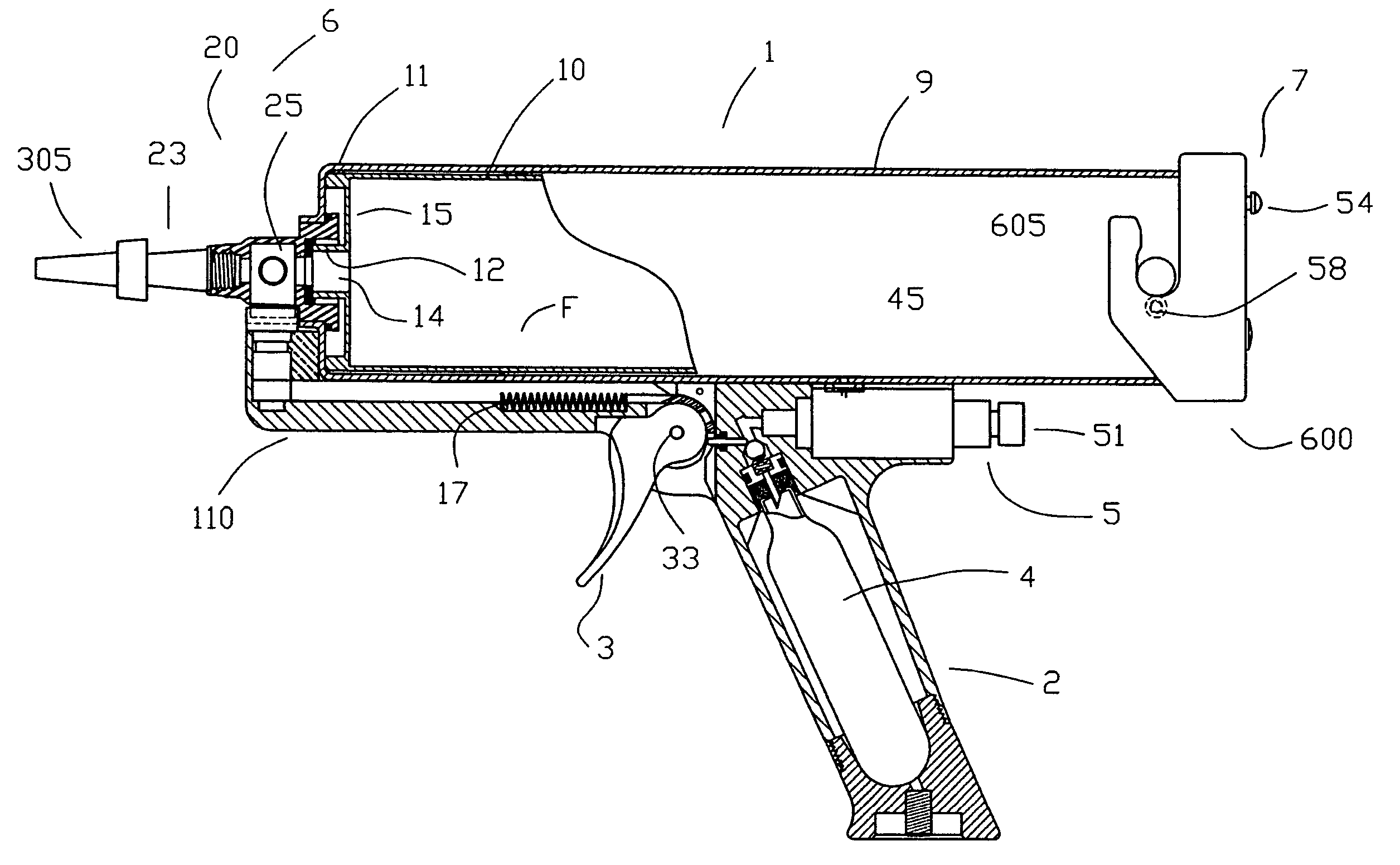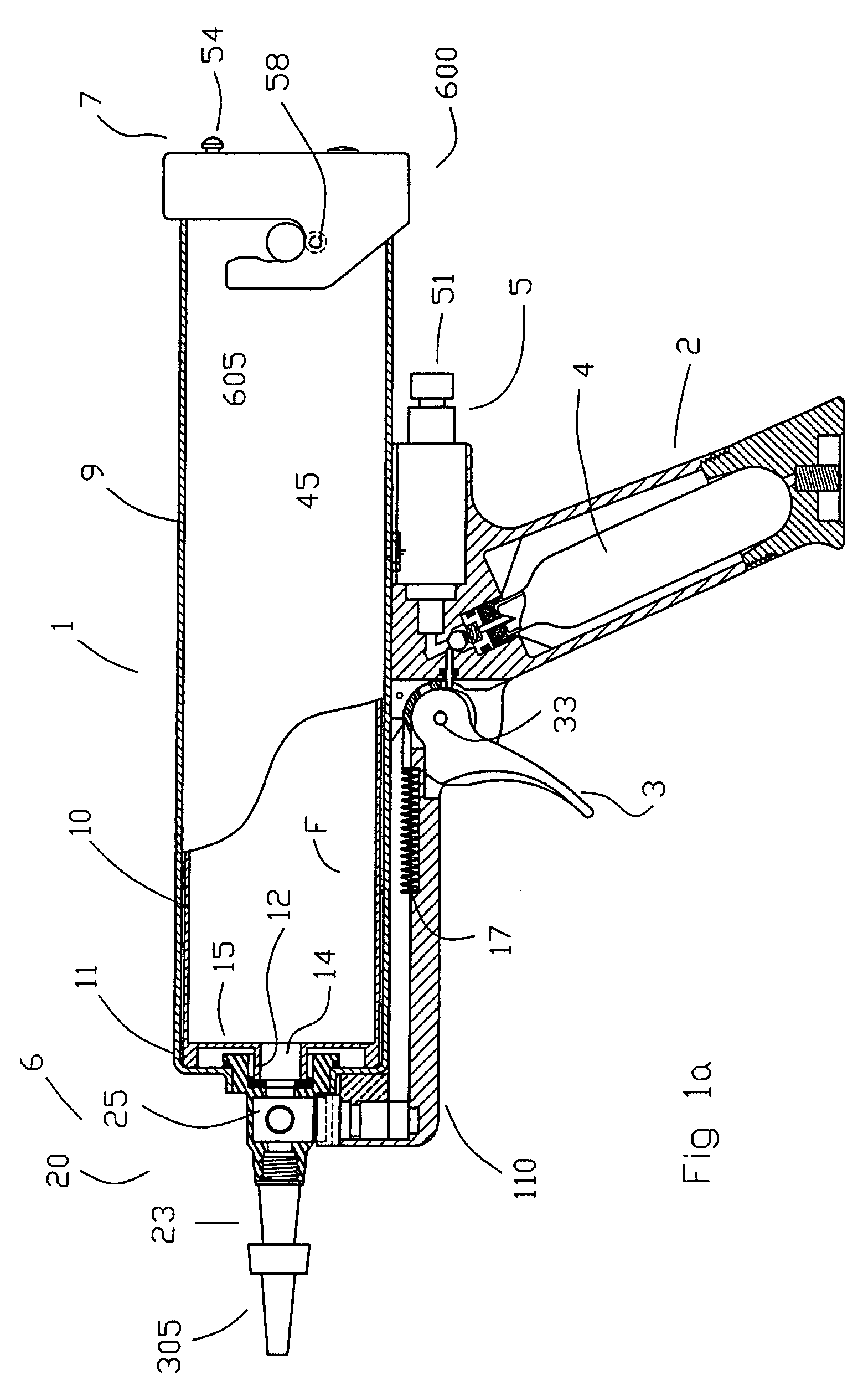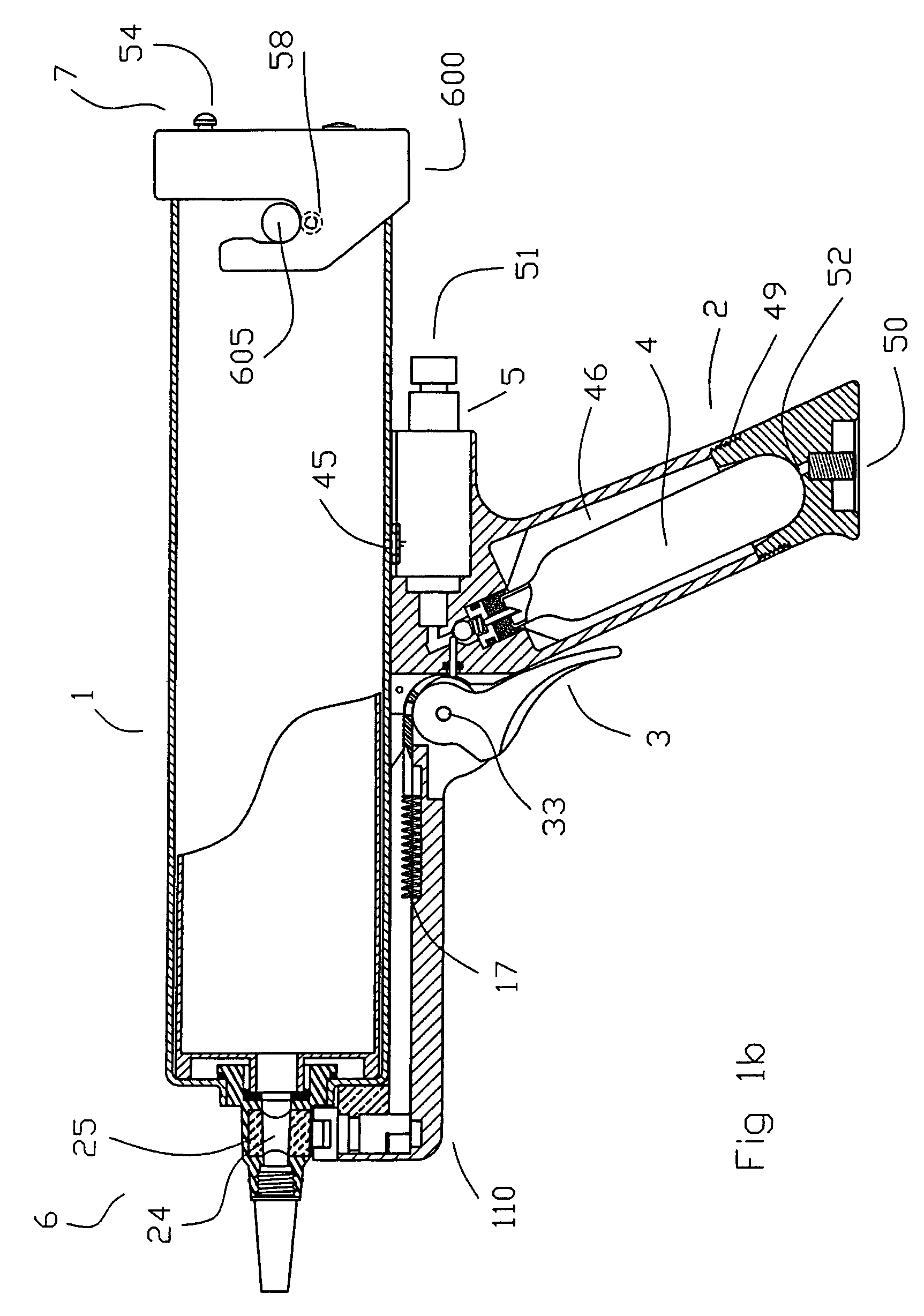Portable gas powered fluid dispenser
a technology of fluid dispensers and gas-powered devices, which is applied in the direction of liquid/fluent solid measurement, container, volume measurement, etc., can solve the problems of spoiling the quality of caulking beads being dispensed from the tubes, and achieve the effects of preventing excess material, minimizing unwanted deposits of viscous material, and spoiling the quality of caulking beads
- Summary
- Abstract
- Description
- Claims
- Application Information
AI Technical Summary
Benefits of technology
Problems solved by technology
Method used
Image
Examples
Embodiment Construction
[0074]With reference to FIGS. 1A, 1B, 2A and 2B, a dispensing device 1 is shown with an air tight housing 9. The air tight housing 9 contains a tube 10 for storing a viscous, flowable material F, such as for example, caulking, sealant, mastic, or adhesive. The dispensing device 1 is provided with a handle grip 2 positioned below the housing, intermediate the dispensing end 6 and loading end 7. A control trigger 3 (used to activate the dispensing nozzle assembly 20 and permit pressurized gas to act on the material F) is pivotally mounted on the handle 2. Trigger 3 is operatively connected (by attachment at guide pin 30) to a flexible, but non-compressible, guide strap 31. The guide strap 31 is part of a guide 21 which operatively connects the movable trigger 3 to the rotatable spindle 25, at the spindle driver 28. Guide 21 is operatively connected to a rotatable guide mount 22 so that the guide mount 22 will rotate upon sliding movement of the guide 21. Guide retainer 62 is positione...
PUM
 Login to View More
Login to View More Abstract
Description
Claims
Application Information
 Login to View More
Login to View More - R&D
- Intellectual Property
- Life Sciences
- Materials
- Tech Scout
- Unparalleled Data Quality
- Higher Quality Content
- 60% Fewer Hallucinations
Browse by: Latest US Patents, China's latest patents, Technical Efficacy Thesaurus, Application Domain, Technology Topic, Popular Technical Reports.
© 2025 PatSnap. All rights reserved.Legal|Privacy policy|Modern Slavery Act Transparency Statement|Sitemap|About US| Contact US: help@patsnap.com



